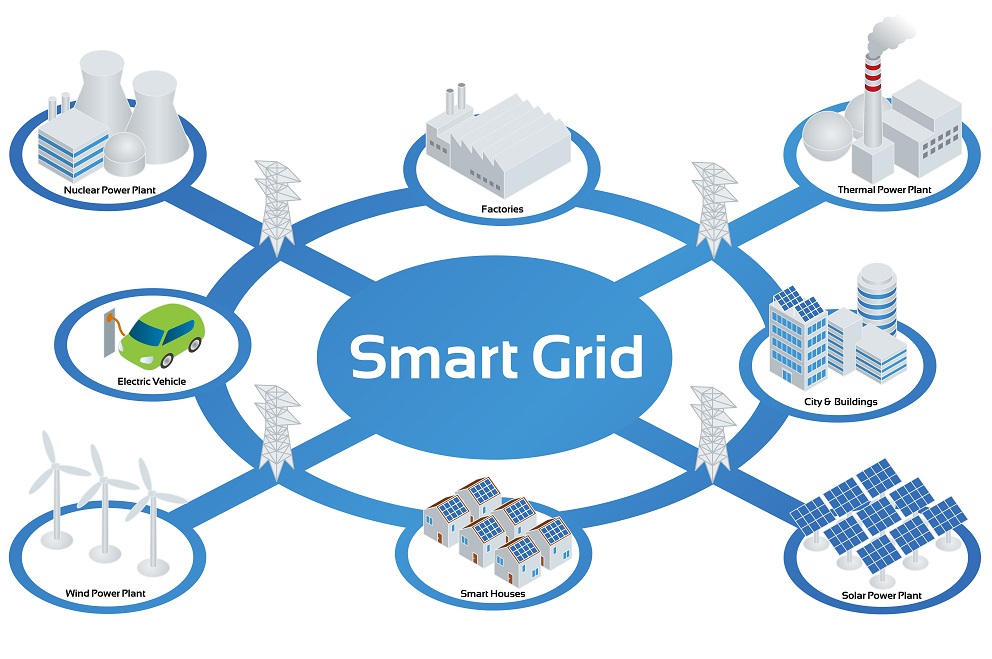Public and private sectors should work together for Smart grids
Energy 6 June 2016The development of smart grids is essential if the global community is to achieve shared goals for energy security, economic development and climate change mitigation. However, Governments, the private sector, and consumer and environmental advocacy groups must work together to define electricity system needs and determine smart grid solutions.
The Smart Grid represents an unprecedented opportunity to move the energy industry into a new era of reliability, availability, and efficiency that will contribute to our economic and environmental health. During the transition period, it will be critical to carry out testing, technology improvements, consumer education, development of standards and regulations, and information sharing between projects to ensure that the benefits we envision from the Smart Grid become a reality.
A smart grid is an electricity network that uses digital and other advanced technologies to monitor and manage the transport of electricity from all generation sources to meet the varying electricity demands of end-users. Smart grids co-ordinate the needs and capabilities of all generators, grid operators, end-users and electricity market stakeholders to operate all parts of the system as efficiently as possible, minimising costs and environmental impacts while maximising system reliability, resilience and stability.
Smart grids include electricity networks (transmission and distribution systems) and interfaces with generation, storage and end-users. While many Member States have already begun to “smarten” their electricity system, all Members will require significant additional investment and planning to achieve a smarter grid. Smart grids are an evolving set of technologies that will be deployed at different rates in a variety of settings around the world, depending on local commercial attractiveness, compatibility with existing technologies, regulatory developments and investment frameworks.
Why the development of smart grids matters?
The development of smart grids is essential if the global community is to achieve shared goals for energy security, economic development and climate change mitigation. Smart grids enable increased demand response and energy efficiency, integration of variable renewable energy resources and electric vehicle recharging services, while reducing peak demand and stabilising the electricity system.
Smart grids are a foundational investment that offer the potential to substitute efficient use of information for more conventional “steel-in-the-ground” investments in the electricity system, at considerable cost savings to consumers, as demonstrated by early results of pilot projects.
Smart grids will also change how power system planning is done, and how wholesale and retail electricity markets are co-ordinated. The information collected through smart grids will not only empower customers to manage their electricity consumption but will enable electricity system operators to better understand and meet users’ needs.

From electricity system needs to smart grid solutions
The physical and institutional complexity of electricity systems makes it unlikely that the market alone will implement smart grids on the scale that is needed. Governments, the private sector, and consumer and environmental advocacy groups must work together to define electricity system needs and determine smart grid solutions.
Today, an electricity disruption such as a blackout can have a domino effect—a series of failures that can affect banking, communications, traffic, and security. This is a particular threat during the winter, when homeowners can be left without heat. A smarter grid will add resiliency to our electric power System and make it better prepared to address emergencies such as severe storms, earthquakes, large solar flares, and terrorist attacks. Because of its two-way interactive capacity, the Smart Grid will allow for automatic rerouting when equipment fails or outages occur. This will minimise outages and minimise the effects when they do happen. When a power outage occurs, Smart Grid technologies will detect and isolate the outages, containing them before they become large-scale blackouts. The new technologies will also help ensure that electricity recovery resumes quickly and strategically after an emergency—routing electricity to emergency services first, for example. In addition, the Smart Grid will take greater advantage of customer-owned power generators to produce power when it is not available from utilities.
By combining these “distributed generation” resources, a community could keep its health centre, police department, traffic lights, phone System, and grocery shop operating during emergencies. In addition, the Smart Grid is a way to address an aging energy infrastructure that needs to be upgraded or replaced. It is a way to address energy efficiency, to bring increased awareness to consumers about the connection between electricity use and the environment. And it is a way to bring increased national security to our energy system—drawing on greater amounts of home-grown electricity that is more resistant to natural disasters and attack.
The roles of the government and the private sector are often misunderstood, at times by themselves and often by each other. The broadness and complexity of the electricity system (technologically and from a regulatory and market perspective), and its importance to society in general, increase the necessity to understand who should perform the actions outlined in this roadmap. Neither the government alone, nor the private sector alone, can accomplish the goal of modernising the electricity system. Collaboration is vital.


